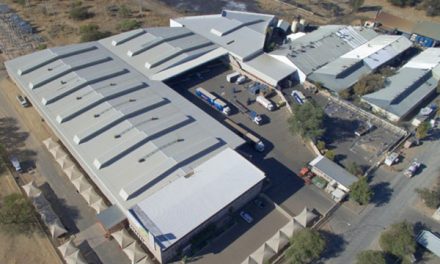
Namibia’s growth outlook deemed favourable
Releasing its monthly review, Rand Merchant Banking (RMB) reviewed its growth prospects with supply side data suggesting that growth could be under pressure.
Despite the sluggish outlook provided, RMB still expects Namibia’s growth outlook to be more favourable than neighbouring economies against a backdrop of a restrictive monetary policy regime in which interest rate hikes are expected for the year.
The outlook was largely driven by the two-week long labour halt in the land-based operations of the Namdeb Group, which is likely to affect production in the third quarter of 2014, impediments regarding the export of livestock following import requirements introduced by South Africa as well as herd adjustments following the drought of 2013 RMB said. RMB research suggests that live exports of cattle to South Africa contracted by 80% year on year in the year to July, while total small exports were down 24% year on year.
Said RMB, “The Bank of Namibia’s most recent monetary policy committee statement shows that private sector credit demand remains strong. It was recorded at 15.3% in 1H14, which supports our annual average GDP growth forecast. We continue to believe that growth will be much more anchored in 2H14.”
“The Bank of Namibia’s MPC again hiked rates by 25 basis points in August. We expect another 25 basis points adjustment in 2H14,which should conclude the hiking cycle for the year. We believe that the hiking cycle will be gradual in light of the global and regional macroeconomic backdrop. The Bank of Namibia remains concerned about the impact of the import bill on reserves, which barely covers the 3-month threshold,” said RMB. However, reserves are sufficient to support the currency peg.
The monetary policy committee took the decision to hike rates on account of the strong growth in credit demand, which it believes is fuelling import demand and thus exerting pressure on reserves, in addition to the strong import of capital goods by developing mines. Our view is that it would be very difficult for the Bank of Namibia to depart meaningfully from the gradual hiking pace provided by the South African Reserve Bank because of the common monetary area. Inflation surprised to the downside in July, printing at 5.6% year on year compared to 6.1% in June. The deceleration in [the] Consumer Price Index is largely due to the slowdown in food, housing, and transport inflation, which jointly account for nearly 60% of the basket. Food inflation slowed for a second month, falling from 10.1% year on year in June to 9.0% year on year in July. Housing and utilities inflation dropped to 3.2% year on year. The biggest decline in inflation in annualised terms came from transport, which moved from 10.7% year on year to 8.5% in July said RMB.
As a result, goods inflation lessened to 6.8% year on year from 7.9%. Services inflation was 4%. We believe that there are risks on the inflation horizon, especially in relation to exchange rate weakness and still maintain our view of inflation averaging 6.2% for this year. The government remains the biggest issuer in the domestic fixed income space. By July government domestic debt stood at N$19.8 billion, falling by 2.6% month on month on account of the GC14 bond redemption, which amounted to N$1.4 billion according to the Bank of Namibia. “However, on a yearly basis, domestic debt increased by 11.4%, which is line with the Medium Term Expenditure Framework. Central government is ramping up spending on infrastructure and it has certainly helped that this is an election year,” RMB said.










































